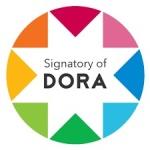The new process toward collaborative learning
Abstract
Blended learning which is an integrated learning, combining the face-to-face and virtual learning, not only improves the training, but also questions and promotes the employee’s self-learning and collaboration skills. The most important innovation for organizations is the establishment of a new learning culture through online training, which is for everyone and which can be used by anyone whom is interested. In order to bring all the training participants, to the same level of knowledge before the presentation training, and to involve them more for more sharing. If comprehension problems arise, it is always possible to ask questions during the learning phase, time advancement during basic knowledge acquisition, offers more time for exercises during the presence phases and allows a targeted coaching performed by the trainers.
Downloads
References
Dangwal, K. L. (2017). Belended Learning: An Innovative Approch. India: Universal Journal of Educational Reaserch.
Decamps, S., & Depover, C. (2011). La perception du tutorat par Les acteurs de La Formation à distance. Bruxelles.
Dopover, C. (2013). La Place et l'importance du tutorat dans les nouveaux dispositifs de Formation à distance, un détour par le Futur-Les Formations ouvertes et à distance à l'agence universitaire de la francofonie. Paris.
Enrique, E., & al. (2010). Social Bookmarking Tools as Facilitators of Learning and Research Collaborattive Processes. The Diigo Case Interdisciplinary Journal of E-Learning and Learning and Learning Objects, 6.
enseingner avec numérique. (s.d.). Consulté le 12 8, 2019, sur http://www.educnet.education.fr/dossier/manuel: https://eduscol.education.fr/numerique
France, H., & Karin, L.-C. (2001). Apprentissge collaboratif à distance: Pour comprendre et concevoir Les environnements virtuels. Canada: Presses de l'université du Québec.
Fuglik, V. (2013). Use of e-portflios in education. ICTU Journal.
https://eduscol.education.fr/numerique/dossier/dossiers-documentaires-tice/manuel. (s.d.). Consulté le 12 6, 2019, sur éduscol: https://eduscol.education.fr/numerique/dossier/dossiers-documentaires-tice/manuel
John, H., & Claire, M. (2014). Blended and Online Learning Curriculum Design Toolkit Idea, suggestions and worksheets for curriculum design, Future Ready. Melbourne, Australia: La Trobe university.
Khelouiati, E. (2012). Localized On-Line a Rural High School: a Case Study. canada: Unpublised Thesis, Thompson Rivers University, Kamloops.
Matha, C.-I., & Dan, W. (2018). Guide to Blended Learning. Canada: Athabasca University.
Mohammed, C., & al. (2014). Contribution à l'intégration de l'apprentissage mixte dans le système éducatif marocain. (I. J. Education, Éd.) 11(1).
Pierre Pasquier, a. (2015, octobre). Jeux sérieux et avatars. Bull. Natle Méd, 199(7), 1155.
Stefan, H. (2008). Asynchronous and synchronous E-Learning, a study of asynchronous and synchronous e-learning methods discovered that each supports different purposes,. Educause Quarterly, 31(4).
waston, J. (2008). https://www.inacol.org/research/promisingpractices/NACOL_PP%E2%80%90BlendedLearning%E2%80%90lr.pdf. Consulté le 12 05, 2019, sur Aurora Institute: http://www.inacol.org/research/promisingpractices/NACOL_PP‐BlendedLearning‐lr.pdf

This work is licensed under a Creative Commons Attribution-NonCommercial 4.0 International License.















